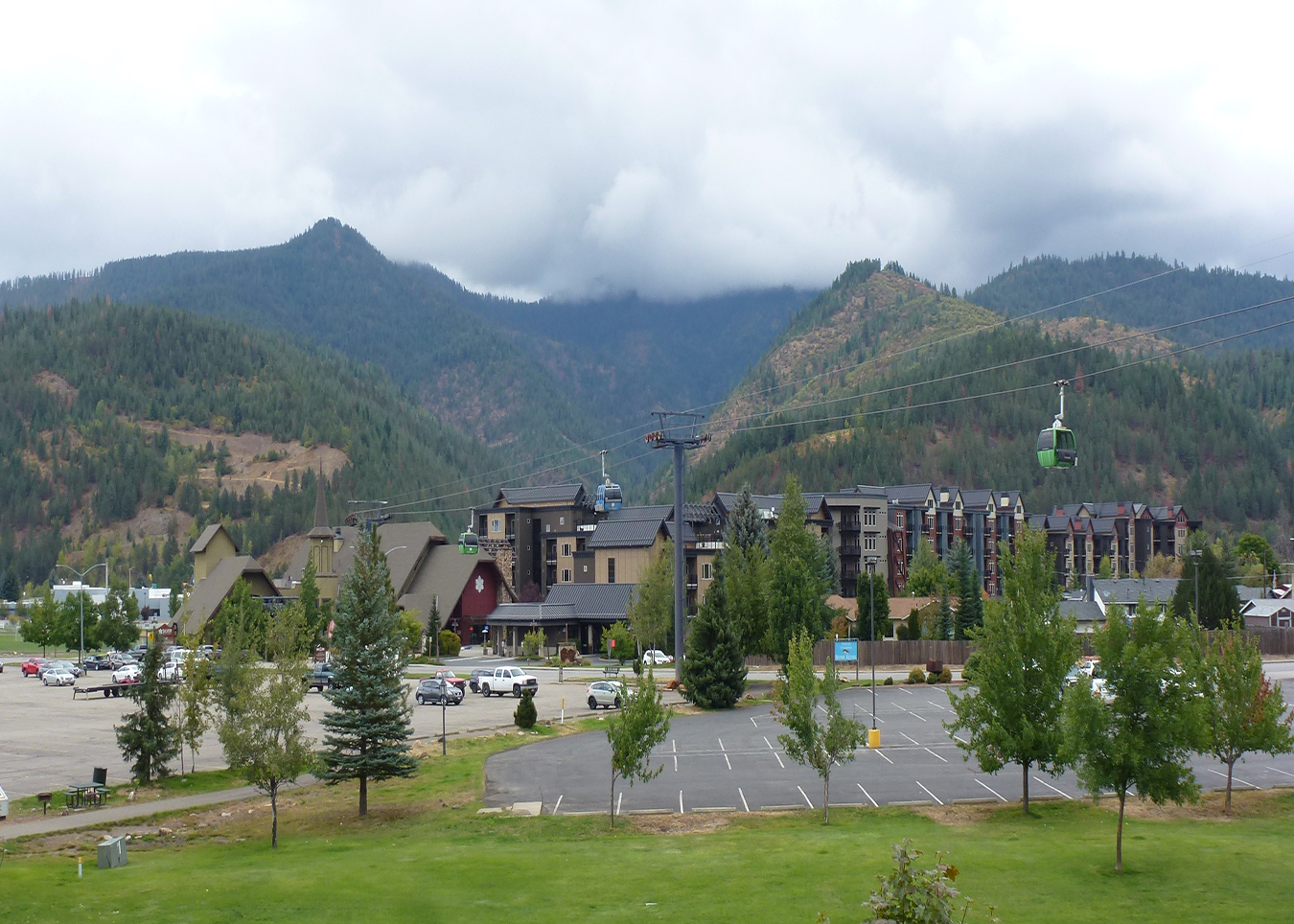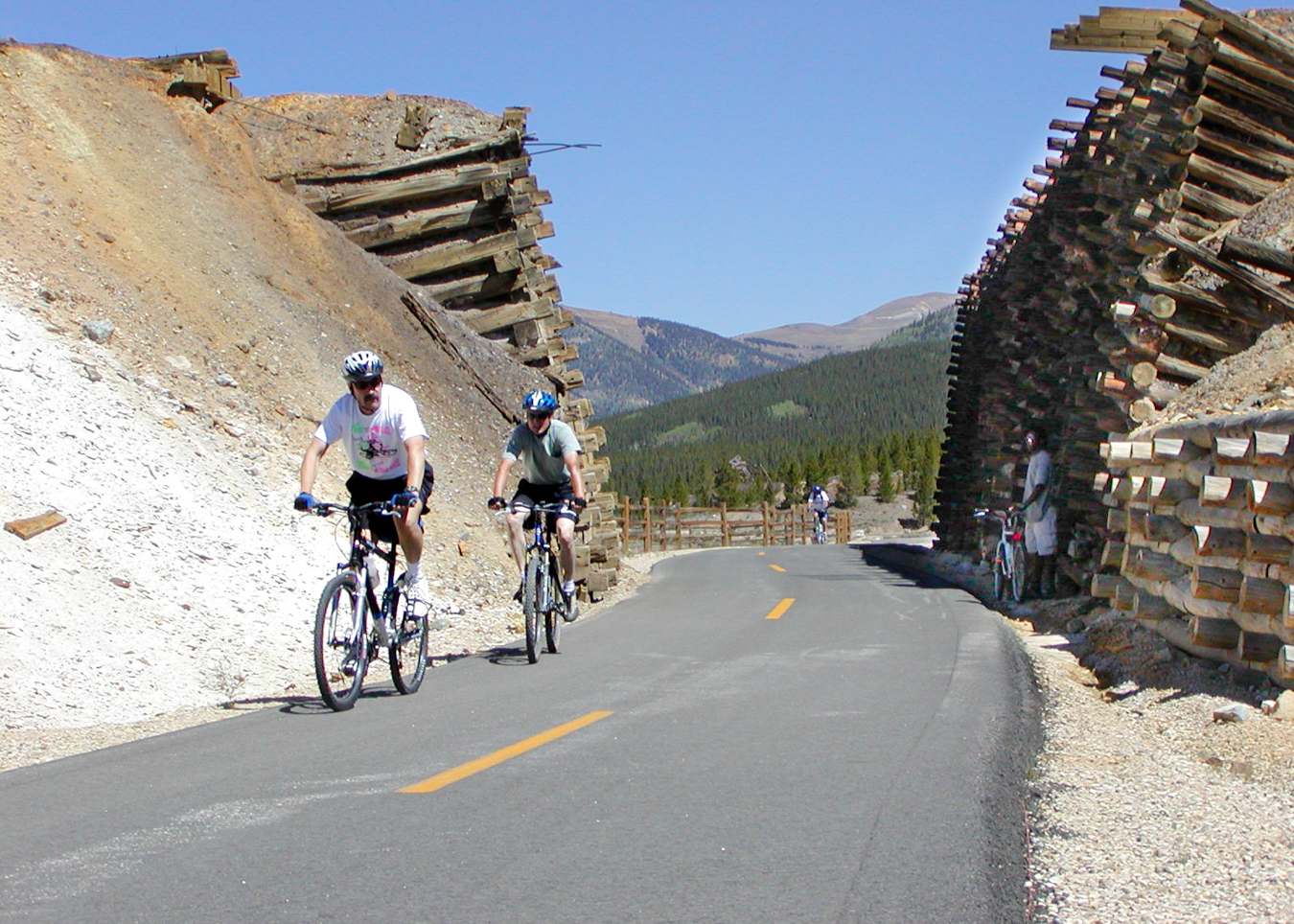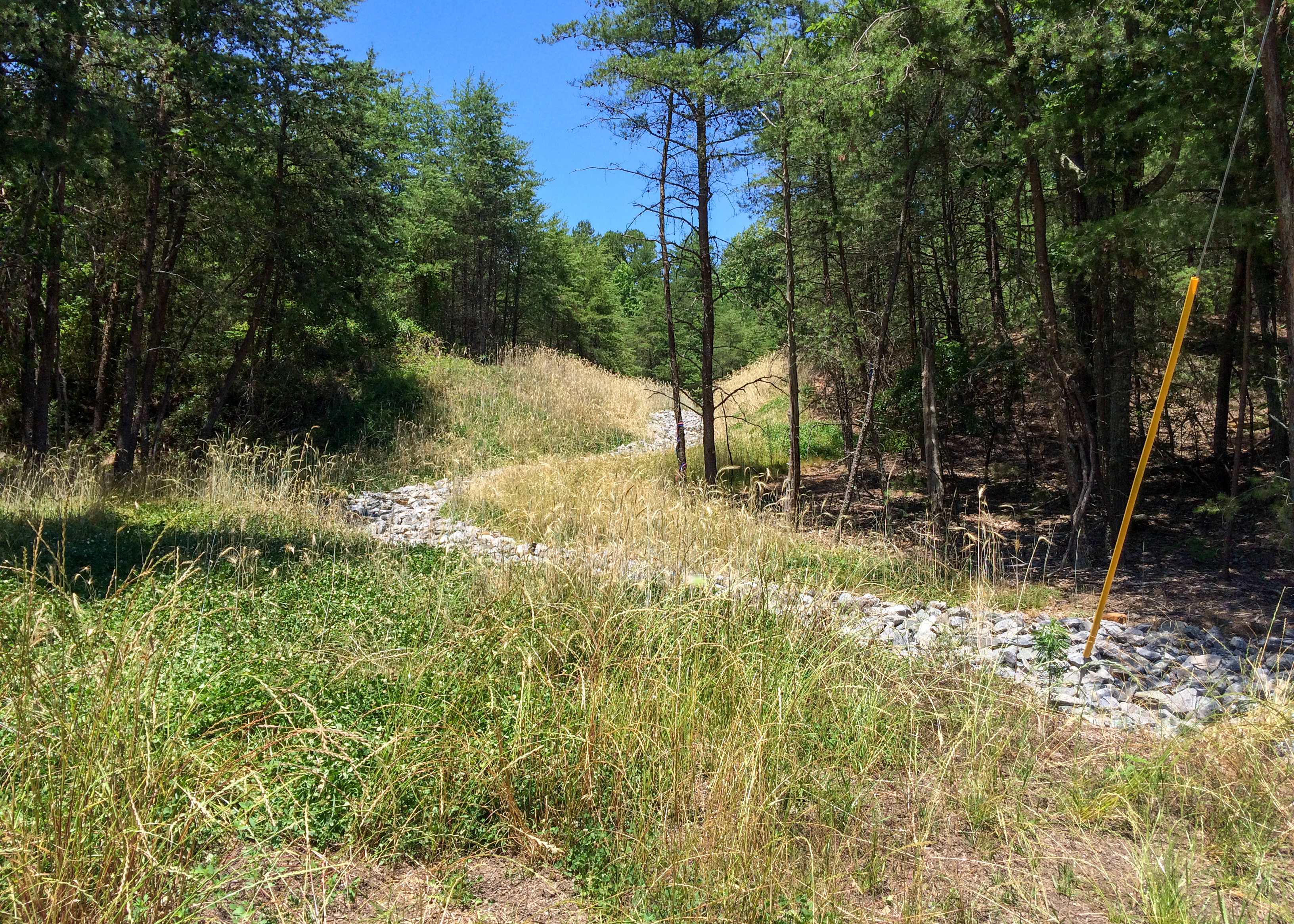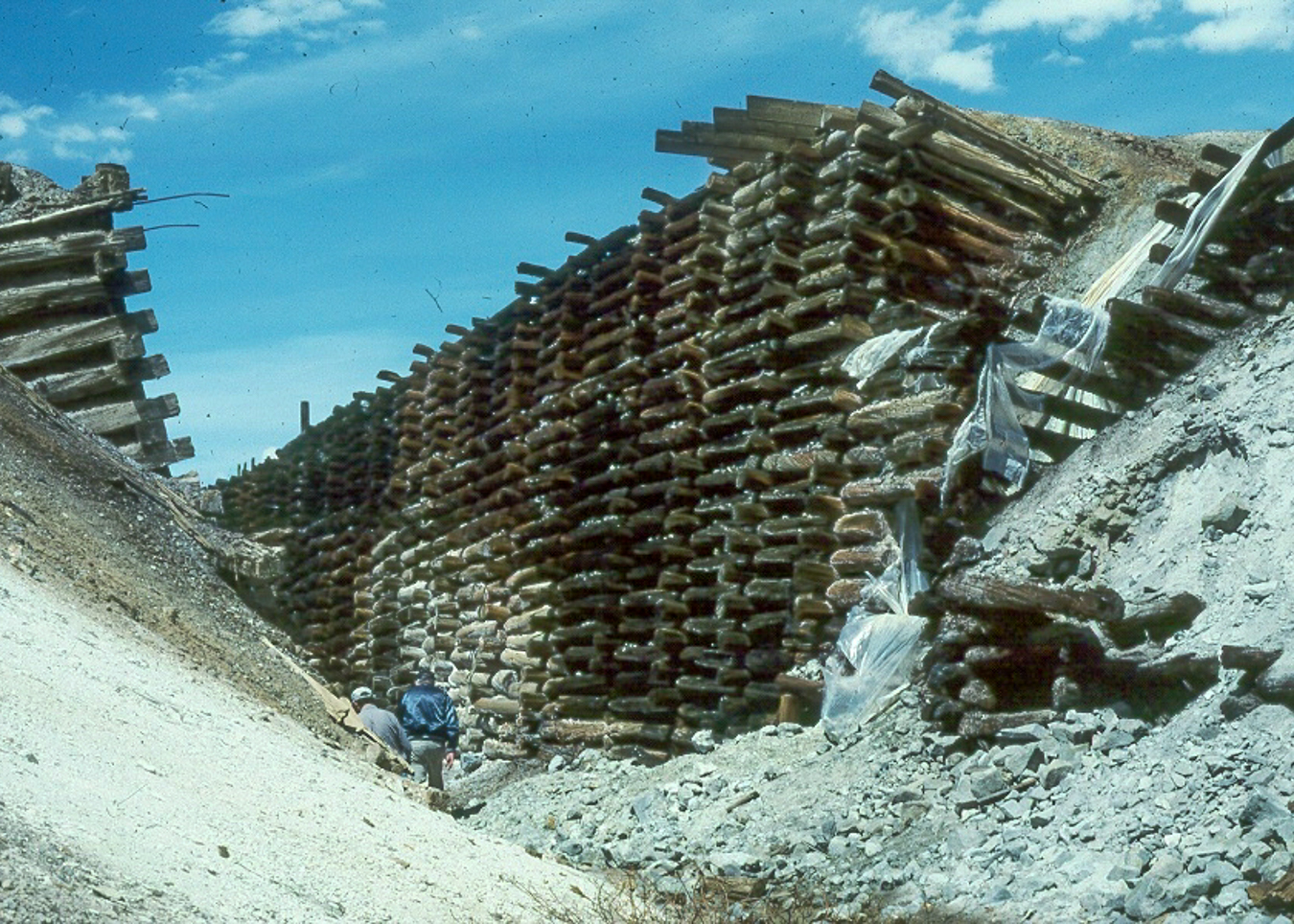

Drag the blue circle in the middle of the image to see before and after site cleanup. The Bunker Hill Mining & Metallurgical Complex Superfund site in Smelterville, Idaho was one of the largest historical mining districts in the world (left). Today, the site supports hundreds of commercial businesses, residential units and a healthy wetland habitat (right).
The U.S. Environmental Protection Agency (EPA) is committed to encouraging the cleanup, reuse, and redevelopment of Superfund sites to achieve significant environmental, economic, and social benefits in surrounding communities. EPA has supported new and ongoing uses at more than 1,000 Superfund sites. The purpose of this document is to answer some of the questions that a prospective purchaser or lessee may have about a property at a current or former Superfund site. EPA resources and additional information related to Questions 1-9 can be found in the response to Question 10.
Contaminated properties are cleaned up under a wide variety of federal, state, tribal, and local government cleanup programs and legal authorities. The federal government is closely involved in the cleanup of some contaminated properties including Superfund sites that have hazardous substances, pollutants, or contaminants located on or beneath them. Superfund sites are cleaned up under the authority of the Comprehensive Environmental Response, Compensation, and Liability Act (CERCLA, commonly known as “Superfund”). Even if a property is not the original source of the contamination, it can be part of a Superfund site.
- What are the advantages of buying a property within a Superfund site?
- How do I find information about a Superfund site and who can I contact at EPA?
- Does the site property have use restrictions and can it be reused safely?
- How can I get protection from Superfund liability if I buy or lease a contaminated property?
- Would I be responsible for doing any cleanup work if I purchase or lease a site property?
- Are there benefits to voluntarily agreeing to do some of the cleanup work at a site?
- How can EPA liens impact a purchase of a Superfund site property?
- What information does a lender need and how can EPA help?
- How can local governments assist in getting Superfund sites back into reuse?
- What resources and support can EPA provide to help purchasers and lessees?
1. What are the advantages of buying a property within a Superfund site?
Many Superfund site properties are in desirable locations close to existing infrastructure, offering excellent redevelopment incentives and may have discounted prices. Redevelopment of Superfund sites throughout the country has led to new uses including affordable housing and residential areas, major shopping centers, business parks, recreational facilities, natural areas, and renewable energy facilities. Superfund cleanups are designed to safely allow specific future uses such as commercial, industrial, or residential use. For example, a property cleaned up to commercial or industrial standards may be suitable for retail, offices, and manufacturing, but not for residential use without additional cleanup.
Many Superfund sites are suitable for redevelopment even if cleanup is still ongoing. Superfund sites are often well studied, so that the nature and extent of contamination is already known, thus reducing certain risks when buying property. In addition, EPA’s Superfund Redevelopment Program and site staff work with communities, stakeholders, and other interested partners to consider and integrate future use opportunities into Superfund cleanup plans.
2. How do I find information about a Superfund site and who can I contact at EPA?
EPA staff and online resources provide important site-specific information. Many Superfund sites have a site profile page on EPA’s website that provides general information including site contacts, location, background history, a list of the contaminants, cleanup activities and progress, redevelopment potential, administrative and legal documents, and mapping tools.
EPA staff, including Superfund Redevelopment Program coordinators and site teams can provide valuable and timely site-specific information to prospective purchasers and other interested parties. For example, they may assist in identifying:
- Whether a proposed use for a property appears to be compatible with EPA’s cleanup plan,
- Any current or future property use restrictions,
- Superfund liability protections that may be available, and
- Existing or potential liens and lien settlement options.
EPA staff may be available to meet either in person, by phone, or electronically to discuss site conditions, cleanup and purchase timelines, and prospective purchaser issues. The Agency also strongly encourages prospective purchasers and other interested parties to contact the appropriate state, tribal, or local government to discuss potential cleanup and liability issues that may arise under their independent legal authorities. EPA staff can provide parties with state, tribal, or local government contact information.
3. Does the site property have use restrictions and can it be reused safely?
The majority of Superfund cleanups are protective of human health and the environment for many types of reuse activities during and after cleanup. Most Superfund sites are cleaned up to be protective for commercial or industrial use, however, some site cleanups are protective for all types of uses, including residential. The EPA may require land use restrictions during a Superfund cleanup or when contamination remains on the property after cleanup at a level that does not allow for unrestricted use. Common examples of properties with restricted use include those within landfills or with contaminated groundwater. Properties can have current or future, temporary or permanent land use restrictions to protect human health and the environment and the cleanup work performed on the property. Land use restrictions typically are implemented through deed restrictions, environmental covenants, zoning, ordinances, permits, and orders.
Purchasers and lessees may need to implement, and must comply with, land use restrictions in order to avoid potential Superfund liability. For example, some properties will have land use restrictions that prohibit or limit disruption of a landfill cover or disturbance of soil beneath a certain depth where contamination may have been left in place but covered with clean fill. At some Superfund sites, cleanup will have progressed to a point where reuse is possible on a portion of the property while the remaining cleanup work continues at the site. In other cases, it may be possible, with EPA pre-approval, to disturb part of a cleanup such as a clay cap or change a land use restriction as part of a reuse, if the disturbance or change is ultimately protective of human health and the environment. Integrating cleanup and reuse plans at Superfund sites with land use restrictions may promote economic efficiencies that enable a property to be reused in a timely and protective manner faster and throughout the cleanup process.
At Superfund sites where contamination is left above levels that allow for unlimited use and unrestricted exposure, either EPA or the state is required to conduct periodic reviews at least every five years. The review is to determine how the cleanup is functioning, whether the site is being used in accordance with land use restrictions, and whether the cleanup remains protective.
Prior to acquiring property at a Superfund site, EPA strongly encourages a prospective purchaser or lessee to consult with their own counsel and environmental professionals, as well as to contact EPA staff, the appropriate state, tribal, or local government, and the current property owner. These contacts can help interested parties understand the status of the site and determine if there are any planned or existing land use restrictions that may affect reuse plans for the property.
4. How can I get protection from Superfund liability if I buy or lease a contaminated property?
A purchaser or lessee will not be responsible for cleanup costs at a Superfund site for contamination they did not cause when they meet the criteria of an appropriate liability protection. The most common liability protection is the Superfund law’s bona fide prospective purchaser (BFPP) protection. This protection is self-implementing and, therefore, parties can go through the steps to achieve and maintain BFPP status without EPA’s involvement. While EPA does not provide or approve BFPP status, the Agency encourages parties to discuss their proposed property plans and potential liability concerns with EPA staff to gather information for achieving and maintaining BFPP status.
So long as a person who purchases or leases property at a Superfund site meets the legal requirements of a BFPP they will be protected from federal Superfund owner or operator liability for any existing contamination on the property. To obtain BFPP status, the purchaser or lessee must satisfy two threshold criteria before the property acquisition. To maintain BFPP status, they must satisfy six continuing obligations after the acquisition.
Purchasers and lessees may lose their BFPP status and become liable for cleaning up contamination in certain situations, including, if they: (1) interfere with or impede the cleanup, (2) worsen the existing contamination, and/or (3) cause a new release of hazardous substances. In addition, although a BFPP is not liable for the cleanup work, the property itself could be subject to a lien as a result of EPA incurring cleanup costs (see Question 7 for information on liens).
EPA has many publicly available online resources related to addressing liability concerns associated with purchasing or leasing contaminated property, including EPA’s Revitalization Handbook and policy and guidance documents addressing liability concerns. EPA staff, including Superfund Redevelopment Program coordinators and site teams frequently receive inquiries about Superfund properties and are willing to discuss potential liability concerns (see Question 2 about site information). Agency staff cannot provide legal advice but can provide information about the property, the types of liability protections, and the criteria for BFPP status.
EPA staff also may discuss site-specific tools, when appropriate, to facilitate the cleanup, reuse, and redevelopment of properties at Superfund sites. The most commonly used site-specific revitalization tools to address potential liability concerns include comfort/status letters and settlement agreements. Comfort/status letters provide information EPA may have about a property and its involvement at the property and describe the Superfund cleanup progress. Comfort/status letters also provide information about liability protections (e.g., BFPP), EPA policies, potential liens that may apply, and may suggest reasonable steps that the purchaser or lessee can take to maintain its BFPP status.
At some Superfund sites, it may be useful for prospective purchasers to enter into a settlement agreement with EPA to address liability concerns to foster and/or help further cleanup and redevelopment. Under an agreement such as a Prospective Purchaser Agreement, a purchaser or lessee does cleanup work and/or makes a payment toward EPA’s cleanup costs at the site in exchange for the federal government providing additional liability protections. An agreement may be appropriate if the purchaser or lessee wants to perform cleanup work that is beyond what is required to maintain BFPP status (e.g., reasonable steps) and/or wants to settle a lien. Agreements can also address EPA liens, detail any cleanup work to be done, and may require financial assurance and the reimbursement of EPA cleanup oversight costs. The Agency will consider potential agreements with interested parties on a site-by-site basis. Although EPA will not change the existing cleanup work underway while negotiating an agreement with a prospective purchaser or lessee, it may amend a cleanup plan in the future to address changes to the property’s planned future use if the updated cleanup plan will remain protective of human health and the environment.
5. Would I be responsible for doing any cleanup if I purchase or lease a site property?
A property owner or lessee with BFPP status, or another federal liability protection generally, will not be responsible for ongoing or future cleanups. However, a property owner or lessee must protect the cleanup work that has been done and prevent or limit the spread of contamination to maintain its liability protection status. For example, a BFPP must exercise appropriate care by taking reasonable steps to stop any continuing releases; prevent threatened future releases; and prevent or limit human, environmental, or natural resource exposure to prior releases of contamination. Examples of reasonable steps may include:
- Providing property access to staff from EPA, the state, and the potentially responsible party authorized to perform cleanup work;
- Preventing public exposure by restricting property access;
- Maintaining the cleanup work that has been done and preventing site conditions from getting worse;
- Assessing and limiting the spread of newly discovered contamination; and
- Monitoring lessee conduct and addressing improper practices.

Drag the blue circle in the middle of the image to see before and after site cleanup. The 18-square mile California Gulch Superfund site in Leadville, Colorado was the location of mining operations for more than 130 years (left). The site has been cleaned up and now supports multiple recreational opportunities (right).
6. Are there benefits to voluntarily agreeing to do some of the cleanup work at a site?
A purchaser or lessee may want to agree to do all or a part of the cleanup work rather than wait for the potentially responsible party or the government to complete it. This can enable a purchaser or lessee to better coordinate cleanup activities into its reuse plans and start redevelopment sooner. For example, a cleanup done by a purchaser or lessee may address contaminated soil excavation, security fencing installation, berm and impoundment stabilization, or the installation of containment systems including caps and landfill covers. Purchasers and lessees must protect the cleanup and avoid spreading contamination in order to maintain Superfund liability protections.
EPA generally supports cleanup work by purchasers and lessees. Such work can accelerate a cleanup, enable the property to achieve its reasonably anticipated future land use, facilitate the long-term stewardship of the property, conserve federal resources, and support community goals. Proposed cleanup work by a purchaser or lessee requires EPA oversight and is considered for approval on a site-by-site basis.
7. How can EPA liens impact a purchase of a Superfund site property?
EPA liens can affect the value of a Superfund site property because prospective purchasers usually negotiate the settlement of any EPA liens in advance of a sale, which often reduces the final purchase price that is negotiated with the seller. EPA uses two types of liens that may impact the purchase of property at a Superfund site:
- Superfund lien – secures EPA’s claim for cleanup costs against the current property owner and is usually resolved before or during a property transfer.
- Windfall lien – secures EPA’s ability to recover the windfall a BFPP may receive when the property increases in value due to cleanup work funded by EPA. A windfall lien’s value is capped by the lesser of either the EPA’s unrecovered cleanup costs or the increase in the property’s fair market value attributable to the cleanup.
Prospective purchasers should contact EPA staff regarding the existence of a Superfund or windfall lien, and/or whether EPA may file a notice of a lien on the property.
Depending on the situation, EPA may be willing to release or settle liens before the purchase of a property and transfer of title. For example, EPA may be willing to release its lien in exchange for the purchaser paying for all or some of the EPA’s cleanup costs and/or doing cleanup work. Because an EPA lien can affect the total purchase price that the seller will receive from the sale of the property, lien settlement negotiations should include EPA, the current property owner, and prospective purchaser. Often the applicable lien can be resolved or settled concurrently with the sale, because both types of liens draw from the same available equity in a property. To avoid delay, a prospective purchaser of a property with an EPA lien or potential lien should begin discussions with EPA as early as possible in the purchase transaction.
The Agency also may issue a comfort/status letter to a prospective purchaser or their lenders to describe the status of any EPA liens on the property.
8. What information does a lender need and how can EPA help?
A lender may have liability concerns and may need much of the same information as a purchaser to make an informed decision about financing the purchase of a contaminated property. EPA’s willingness to work with purchasers and lenders and to use site-specific tools may help alleviate a lender’s potential concerns about financing the purchase of a contaminated property.
The Superfund law includes liability protections specifically for secured creditors, such as lenders, that don’t participate in the management of a contaminated property but simply hold a security interest in it. For example, depending on the circumstances, a lender may foreclose on a contaminated property and then sell, re-lease, liquidate, maintain business activities, stop operations, or do the cleanup work and remain protected from Superfund liability even though it holds title to the property. This liability protection complements the BFPP protection that can protect a purchaser’s ability to repay a lender. EPA’s Superfund enforcement policy and guidance documents database includes a list of documents that provide further details on lender liability protections at Superfund sites.
9. How can local governments assist in getting Superfund sites back into reuse?
Local governments play an important role in returning Superfund sites to productive use. Local governments have many opportunities to be involved in the cleanup plan and/or redevelopment of a contaminated property. EPA staff work with local governments, communities, and other interested parties to ensure community involvement in the cleanup when considering how to integrate appropriate future reuse into a cleanup plan. EPA staff also can work with local governments to provide community reuse planning efforts for Superfund sites. Examples of local government involvement and assistance may include managing land use, acquiring property, maintaining infrastructure, responding to emergencies, securing property access, managing delinquent taxes, financing development, and organizing and participating in public meetings about the cleanup and opportunities for reuse. EPA recommends local governments review EPA’s Revitalization Ready Guide which describes how a community can initiate and lead the redevelopment process for a contaminated property.
Superfund liability protections may be available to state and local governments when they acquire a contaminated property through, and including tax foreclosure, abandonment, escheat, eminent domain, and transfers between units of state and local governments such as land banks or redevelopment authorities. EPA recommends that local governments contact the Agency’s staff, consult with their appropriate state environmental agency, and their own legal counsel, and review EPA guidance on Superfund liability protections for local governments prior to taking any action to acquire ownership or control or to clean up or redevelop contaminated property at a Superfund site.
10. What resources and support can EPA provide to help prospective purchasers and lessees?
EPA has a wide array of resources and provides support to assist stakeholders in the sale, purchase, and redevelopment of a Superfund site. Key resources and support are available from EPA’s public website:
Site-specific tools are also available to assist interested parties in making timely property acquisition decisions. These include:
- Prospective Purchaser Inquiry meetings and calls to provide critical information to prospective purchasers, sellers, lessees, and other interested parties involved in the redevelopment of properties at Superfund sites (see Question 2 on site information).
- EPA community reuse assessments and planning services to provide opportunities for communities and EPA site teams to partner to facilitate redevelopment, remove barriers to reuse, and to ensure future use is well aligned with the cleanup process.
- Comfort/Status Letters to provide information EPA has about a property and how it has responded or plans to respond to environmental conditions at the property. Comfort/status letters also provide information about liability protections (e.g., BFPP), EPA policies, or liens that potentially may apply and may suggest reasonable steps to maintain BFPP status. (see Questions 4 and 5 on BFPPs and reasonable steps).
- Settlement Agreements to address liability concerns of a prospective purchaser when they are willing to do cleanup work that is beyond what would be expected of them to maintain a Superfund law liability protection (e.g., BFPP reasonable steps).
- Lien settlements to be negotiated in an agreement with EPA in exchange for the purchaser paying for and/or doing cleanup work (see Question 7 and EPA’s Superfund enforcement’s policy and guidance database for a list of guidance documents on liens).
- Site Ready for Reuse Fact Sheets to provide summary information about some Superfund sites that have been reused or may be available for reuse.
- Ready for Reuse (RfR) Determinations to affirm a technical determination by EPA that a Superfund site’s conditions are protective of human health and the environment for a specific use as long as use restrictions are complied with.
Disclaimer: This document is provided to the public solely to highlight and summarize certain aspects of a more comprehensive program. It does not provide legal advice, have any legally binding effect, or limit or expand obligations under any federal, state, tribal, or local law. This document is not intended to and does not create any substantive or procedural rights for any person at equity or law. It is the purchaser’s sole responsibility to maintain its liability protections and to ensure that its proposed use does not interfere with the site’s cleanup. Prospective purchasers should consult with their own legal counsel to determine potential CERCLA liabilities and the applicability of the BFPP defense in their specific situation.

Drag the blue circle in the middle of the image to see before and after site cleanup. The Henry’s Knob Superfund site in Clover, South Carolina was an open pit mine for over 20 years. Cleanup of the site included adding seed and straw for the site’s tailings (left), that has since grown into vegetation that support local pollinators (right).



